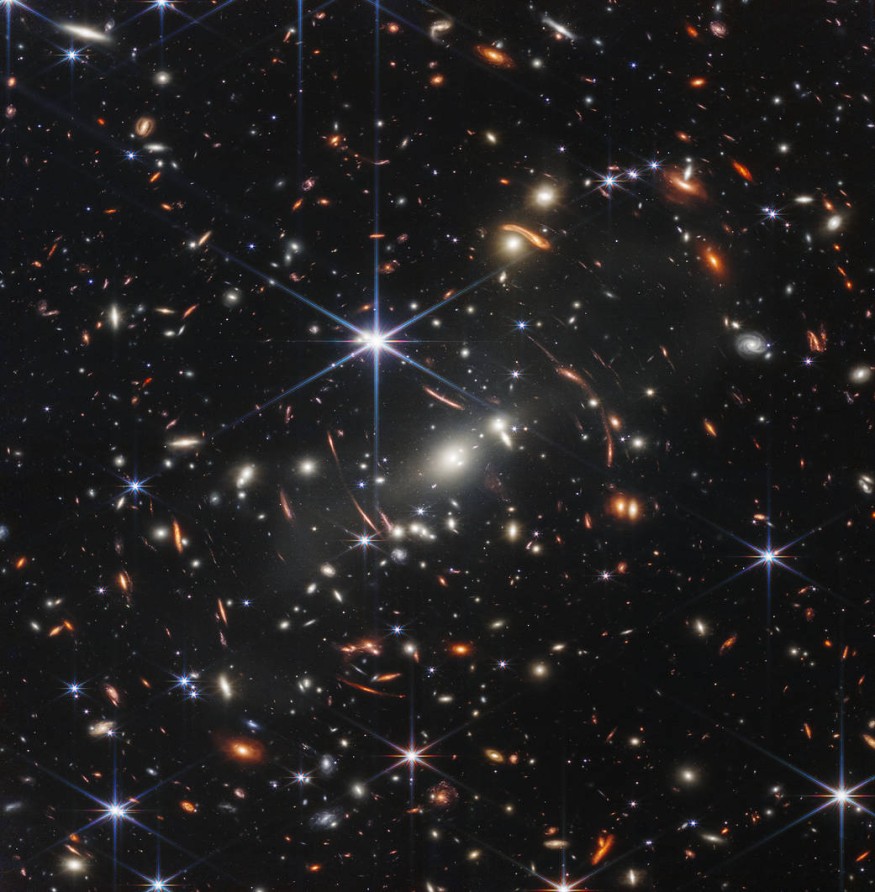Astronomers at the Center for Astrophysics | Harvard & Smithsonian (CfA) found a "Schrodinger's Galaxy Candidate" a few days after the National Aeronautics and Space Administration's (NASA's) James Webb Space Telescope released its photos to the public.
The galaxy is known as GLASS-Z13, and only lately, CEERS-1749, another possibility for a far-off galaxy, was published on paper based on the James Webb Space Telescope's early release research programs.
A highly bright galaxy that would have been there more than 200 million years after the Big Bang appears to be the CEERS-1749. If verified, this may change how we think about the universe.
However, the data suggests two potential locations for the CEERS-1749, and no one is yet certain which one is accurate because further investigation and observation are still needed. As a result, astronomers called it Schrodinger's galaxy contender.

Redshift Causes "Schrodinger's Galaxy Candidate" To Stay in 2 Places
Study lead author Rohan Naidu, a Harvard University astronomer, explained in a tweet that redshift is the reason CEERS-1749 could be at two different locations. Astronomers investigate the wavelength of light, particularly the phenomena of light known as redshift, to ascertain the distance of a galaxy.
CNet mentioned that the light waves emitted by distant galaxies are stretched over time, which causes the waves to move toward the red end of the electromagnetic spectrum and become more intense.
UV light that departs the galaxy like Schrodinger will be redshifted down into the infrared rather than arriving at Earth as UV. This is actually fantastic since the James Webb Space Telescope looks for this sort of light.
First, the case for z~17 (potentially the most distant galaxy known!!?). The redshift we infer -- like several other teams -- after dozens of tests, is an unequivocal z~17. In fact, this paper started out a couple weeks ago as "wow, look at this ridiculously distant galaxy!!!". pic.twitter.com/2HzXe4bNOM
— Rohan Naidu (@Rohan_Naidu) August 5, 2022
ALSO READ : Did NASA Choose 20-Year-Old Space Enthusiast for a One Way Ticket to Mars? Apparently Not
The NASA telescope also contains several filters that look at various infrared wavelengths. It is feasible to view through the wavelengths as you would through a picture book while studying a galaxy like Schrodinger's.
The red wavelengths on the first few pages will be less pronounced, and you won't even see them in some situations. The ghost of a galaxy only appears as you turn through and the wavelengths get redder.
Higher values of the z parameter, which represent redshift, indicate a further-off object. For starters, the GN-z11, which has a z value of 11.09, is one of the proven furthest galaxies.
According to the Schrodinger team, it could have a z value of about 17, placing the light's age at more than 13 billion years in the past. This could also require us to reconsider galaxy models and their development in the early cosmos.
For this reason, the team argues that there may be strong environmental evidence suggesting the object's z value is likely to be around 5, which would indicate that its light is around 12 years old. According to this theory, Schrodinger may even be a satellite galaxy of one of its larger companions.
RELATED ARTICLE : French Scientist Uses a Photo of Spanish Chorizo and Jokes About James Webb Space Telescope Finding a Red Giant Star in Another Planet
Check out more news and information on Space in Science Times.
© 2025 ScienceTimes.com All rights reserved. Do not reproduce without permission. The window to the world of Science Times.












